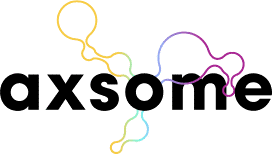COVID Encephalopathy
Neurologic Manifestations of COVID: COVID Encephalopathy
Laura Valzolgher, MD; Memory Clinic, Hospital of Bolzano, Italy
Key highlights:
- Reports of neurological manifestations for COVID are increasing in literature although the clinical presentation typically involves respiratory symptoms
- Neurologic manifestations of COVID include anosmia and ageusia, encephalopathy, encephalitis, hyper-coagulable states leading to stroke, and acute neuropathies such as Guillain-Barré syndrome
- Although the diagnosis is made autoptic, clinical evidence for brain inflammation is also accepted for clinical purposes and diagnosis can be made with different level of certainity: confirmed, probable, possible COVID infection
- Neurological manifestations for COVID are less frequent but must be taken into account as possible cause especially in patients with no respiratory disease or hospitalized patients for other reasons with possible nosocomial transmission
As it is well known, the clinical presentation of COVID typically involves respiratory symptoms; however case reports of neurological manifestations of COVID are increasing in the literature. Neurological symptoms might be a combination of non-specific complications of systemic viral disease, a direct effect of the viral infection, or consequences of inflammation of the nervous and vascular systems.
Typically described neurologic manifestations of COVID include anosmia and ageusia, which are so common and specific in patients affected by COVID that they are often included in screening prediction algorithims for patients referred to medical centres; these symptoms can also occur in the absence of other clinical features. Encephalopathy has been reported in a recent review published in Lancet Neurology, for 93 patients in total, including 16 (7%) of 214 hospitalized patients with COVID-19 in Wuhan, China, and 40 (69%) of 58 intensive care unit patients with COVID-19 in France. Other neurologic manifestations include: encephalitis and Guillan-Barre’ syndrome, which have been reported in patients hospitalized for COVID infection. Also, acute cerebrovascular disease has emerged as an important complication with stroke reported in 2–6% patients hospitalized with COVID-19 according to cohort studies. Other symptoms of central nervous system (CNS) involvement for patients with COVID-19 include headache, disturbed consciousness, and paresthesia.
COVID Encephalopathy
Encephalitis is the inflammation of brain parenchyma caused by infection with a direct mechanism or indirectly provoked by the immune defences. However the pathophysiological characteristics of SARS-CoV-2 associated encephalitis is not fully understood. Autoptic reports have demonstrated in affected patients brain tissue edema and partial neuronal degeneration. Although this is a pathological diagnosis, clinical evidence of brain inflammation is also used for diagnostic purposes including CSF pleiocytosis, imaging findings, or focal abnormalities on EEG. Detection of the virus in the CSF alone does not provide a diagnosis of encephalitis if there is no evidence of brain inflammation. Diagnosis of CNS involvement in COVID might have different levels of certainity. A diagnosis of “confirmed” COVID infection in the CNS is made when (1) SARS-CoV-2 is detected in CSF or brain tissue, or there is evidence of SARS-CoV-2-specific intrathecal antibody; and (2) there are no other explanatory pathogens or causes detected. A diagnosis of “probable“ involvement of CNS by SARS-CoV-2 is made when (1) SARS-CoV-2 is detected in respiratory or other non-CNS samples, or evidence of SARS-CoV-2-specific antibody is found in serum indicating acute infection; and (2) no other explanatory pathogen or causes are found. A diagnosis of “possible” COVID encephalitis is made when the patient can be defined as a suspected case for COVID-19 according to national or WHO guidelines: thus when the patient meets clinical symptoms and epidemiological risk factors. Adjunctive and supportive clinical features include at least one of the following symptoms: cough, fever, muscle aches, loss of smell, or loss of taste; lymphopenia or raised D-dimer level; or radiological abnormalities in chest x-rays suggestive for COVID infection/pneumonia. Differential diagnoses other than COVID-19 also must be ruled out which include hypoxia, drugs, toxins, and metabolic derangements.
As stated above, encephalopathy has been reported in a review article published in Lancet Neurology, for 93 patients in total, including 16 (7%) of 214 hospitalized patients with COVID-19 in Wuhan, China, and 40 (69%) of 58 intensive care unit patients with COVID-19 in France
Encephalopathy usually develops over hours to days which can manifest neuropsychiatric abnormalities, such as personality and behavior changes, diminished cognition, delirium, or even coma.
In a large retrospective study from Wuhan, China which included 214 patients with COVID-19, 53 of them (25%) had CNS symptoms including: dizziness in 36 patients (17%), headache in 28 patients (13%), and impaired consciousness in 16 patients (7%). Severe respiratory disease was also found in 27 (51%) of the patients with CNS symptoms. In the French series which included 58 intensive care patients with COVID-19, 84% had neurological complications, 69% with encephalopathy and 67% with cortico-spinal tract signs.
Conclusion
Although many patients affected by the SARS-CoV-2 infection are asymptomatic or show very mild signs and symptoms, physicians must be mindful that some patients may present with atypical neurological symptoms which can present without respiratory manifestations. Therefore careful screening must be performed in each patient presenting with neurological symptoms, and in particular encephalopathy to rule out other possible causes. Moreover, patients hospitalized for other reasons may be infected coincidentally through nosocomial transmission suddenly developing neurologic manifestations.
References
- Mark A Ellul et al. Neurological Associations of COVID 19. Lancet Neurol 2020Published OnlineJuly 2, 2020 https://doi.org/10.1016/S1474-4422(20)30221-0
- Yeshun Wu et al , Nervous system involvement after infection with COVID-19 and other coronaviruses Brain Behav Immun. 2020 Jul; 87: 18–22. Published online 2020 Mar 30. doi: 10.1016/j.bbi.2020.03.031
- Mingxiang Ye et al Encephalitis as a clinical manifestation of COVID-19 Brain Behav Immun. 2020 Aug; 88: 945–946. Published online 2020 Apr 10. doi: 10.1016/j.bbi.2020.04.017
 Laura Valzolgher, MD, works at the Memory Clinic at the Geriatric Department of Bolzano Hospital, Italy. She is currently completing a Master of Science Degree in Psychogeriatrics at University La Sapienza Rome.
Laura Valzolgher, MD, works at the Memory Clinic at the Geriatric Department of Bolzano Hospital, Italy. She is currently completing a Master of Science Degree in Psychogeriatrics at University La Sapienza Rome.
Excerpted from the IPA Bulletin, Volume 37, Number 3









